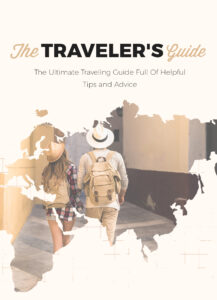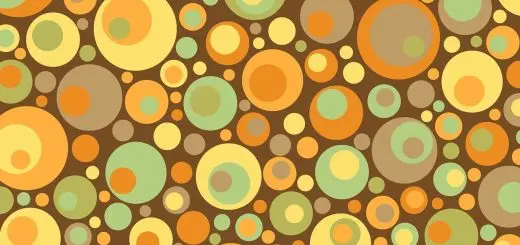How Travel Influences Language and Dialects

Looking for more amazing products? Check out our online store and explore our collection here! Happy shopping!
Before diving in, please note: This post is for informational purposes only. If you’d like to know more about how we approach topics, feel free to check out our friendly Disclaimer Page.
Hey there, amazing readers! 
We’re committed to delivering quality posts, and your support (even just sticking around despite the ads) means everything to us. So, bear with us, and thanks for helping us keep the good vibes rolling. Now, on to the fun stuff!
TRANSLATE BUTTON AT THE END OF THE ARTICLE
Language is more than just a means of communication—it’s a reflection of culture, history, and human connection.
One of the most fascinating aspects of travel is how it influences language and dialects.
Every journey, whether taken by traders, explorers, or modern tourists, leaves behind linguistic footprints.
Let’s dive into the incredible ways travel has shaped the evolution of languages and dialects across the world.
Introduction
Have you ever noticed how certain words or accents remind you of specific places?
That’s because travel—whether through migration, trade, or cultural exchange—has always been a powerful force in shaping language.
From the adoption of new vocabulary to the birth of hybrid dialects, the influence of travel is evident in nearly every corner of the globe.
Historical Impact of Travel on Language
Travel has been influencing languages for centuries, long before the invention of planes or trains.
Ancient trade routes like the Silk Road and maritime expeditions spread not only goods but also words and ideas.
Trade Routes and Borrowed Words
Silk Road: This ancient network of trade routes connected Asia, Europe, and Africa, introducing words like “sugar,” “tea,” and “silk” into languages worldwide.
Maritime Trade: Seafaring nations, such as Portugal and Spain, brought new vocabulary to the Americas, Africa, and Asia.
Migration and Colonization
Migration: When communities move, they bring their language with them.
Over time, this leads to the blending or evolution of dialects.
Colonization: Colonizers often imposed their language on local populations, creating hybrid dialects (e.g., Creole languages).
How Tourism Shapes Modern Languages
Tourism has a significant influence on languages in today’s interconnected world.
With millions of people traveling annually, languages are constantly adapting to accommodate global visitors.
Loanwords and Phrases
When travelers interact with locals, they often introduce new words:
English Words in Global Tourism: Terms like “selfie,” “weekend,” and “OK” have become widely adopted across cultures.
Borrowed Culinary Terms: Sushi (Japanese), pasta (Italian), and taco (Spanish) have entered global vocabularies thanks to food tourism.
Lingua Franca of Tourism
English often serves as the global lingua franca, but other languages like Spanish, French, and Mandarin are also gaining prominence in international tourism hubs.
Dialect Evolution Through Travel
Travel doesn’t just influence vocabulary—it also affects accents and dialects.
This phenomenon is particularly visible in areas where different linguistic groups converge.
Urban Centers as Linguistic Melting Pots
Cities that attract travelers and immigrants often develop unique dialects:
New York City English: Influenced by waves of immigrants from Italy, Ireland, and Eastern Europe.
Singaporean English (Singlish): A blend of English, Malay, Mandarin, and Tamil, reflecting Singapore’s multicultural heritage.
Regional Dialect Shifts
In rural areas, exposure to tourists often leads to the adaptation of local dialects.
Locals may adopt phrases or accents to communicate more effectively with visitors.
Technology and the Spread of Language
In our digital age, travel isn’t limited to physical journeys.
Virtual interactions through social media and apps like Duolingo or Google Translate also contribute to the exchange of languages.
Influences of Social Media
Platforms like Instagram and TikTok popularize slang and expressions across borders.
Discover "The Traveler’s Guide: Your Ultimate Companion for Every Adventure
"
For example:
“FOMO” (Fear of Missing Out) and “YOLO” (You Only Live Once)** have gained international recognition.
Language Learning Apps
These tools enable travelers to learn basic phrases before visiting a new country, fostering cultural exchange and mutual respect.
Case Studies of Linguistic Transformation
The Caribbean: A Creole Story
The Caribbean islands are a linguistic treasure trove, with languages shaped by the meeting of African, European, and Indigenous cultures.
For example:
Jamaican Patois: A Creole language with influences from English, West African languages, and Spanish.
India: A Multilingual Hub
India’s history of trade, colonization, and travel has resulted in a linguistic landscape that includes over 19,500 distinct languages and dialects.
English and Hindi serve as unifying languages in a country rich with diversity.
Europe: The Schengen Effect
The ease of travel across European borders has led to increased linguistic borrowing, particularly among younger generations fluent in English, German, or French.
Benefits of Travel-Induced Linguistic Exchange
Cultural Awareness: Learning new words and phrases fosters deeper connections with other cultures.
Economic Opportunities: Multilingual individuals often have access to better job prospects.
Preservation of Endangered Languages: Tourism can revive interest in local dialects and traditions.
Tips for Travelers to Engage with Language
Learn Basic Phrases: Greeting locals in their language shows respect and appreciation.
Take Language Classes: Enroll in a short course before or during your trip.
Use Translation Apps: While not perfect, these apps are invaluable for basic communication.
Engage in Conversations: Don’t be afraid to make mistakes—locals will often appreciate your effort.
Support Local Storytelling: Attend cultural events or tours led by locals to hear stories in their dialect.
Conclusion
Travel is one of the most profound ways to experience the diversity of human language.
From ancient trade routes to modern tourism, the exchange of words and ideas has brought us closer together.
By embracing linguistic exploration on your next journey, you’re not just seeing the world—you’re understanding it on a deeper level.
So, pack your bags, grab your phrasebook, and get ready to speak the language of travel!

The Enlightenment Journey is a remarkable collection of writings authored by a distinguished group of experts in the fields of spirituality, new age, and esoteric knowledge.
This anthology features a diverse assembly of well-experienced authors who bring their profound insights and credible perspectives to the forefront.
Each contributor possesses a wealth of knowledge and wisdom, making them authorities in their respective domains.
Together, they offer readers a transformative journey into the realms of spiritual growth, self-discovery, and esoteric enlightenment.
The Enlightenment Journey is a testament to the collective expertise of these luminaries, providing readers with a rich tapestry of ideas and information to illuminate their spiritual path.
Our Diverse Expertise
While our primary focus is on spirituality and esotericism, we are equally passionate about exploring a wide range of other topics and niches 

To ensure we provide the most accurate and valuable insights, we collaborate with trusted experts in their respective domains 
Our blog originally focused on spirituality and metaphysics, but we’ve since expanded to cover a wide range of niches. Don’t worry—we continue to publish a lot of articles on spirituality! Frequently visit our blog to explore our diverse content and stay tuned for more insightful reads.
Hey there, amazing reader! 
Check out our store here and take a peek at some of our featured products below! Thanks for being awesome!











